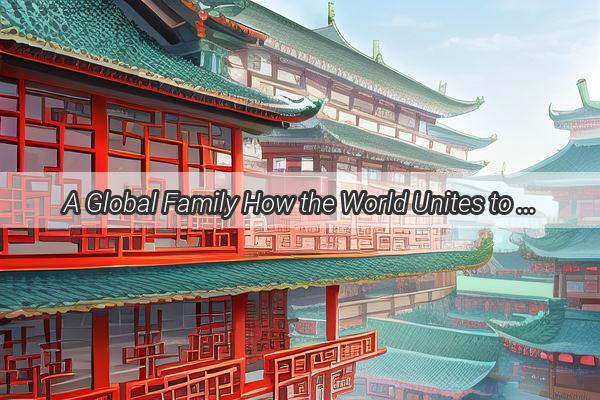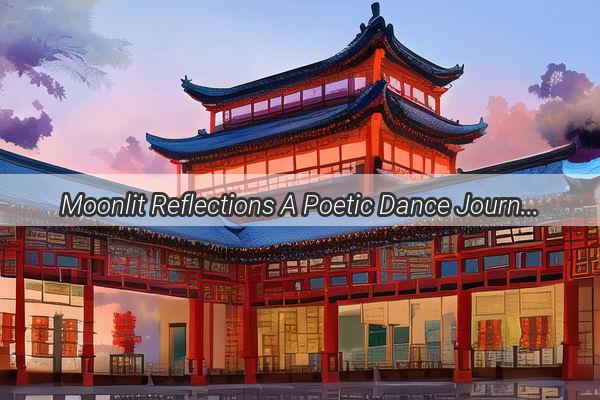Whispers of the Silk Road A Journey Through Chinas Cultural Tapestry
In the heart of ancient China, where the whispers of time echo through the ages, lies a treasure trove of cultural heritage that has stood the test of time. The Silk Road, a legendary network of trade routes, serves as the spine of this cultural tapestry, weaving together tales of empires, philosophies, and the essence of human spirit. Whispers of the Silk Road: A Journey Through China's Cultural Tapestry invites you to embark on an enchanting voyage that will unveil the hidden gems of this storied past.
The Silk Road, a name that evokes images of camels and caravans, began its journey around 130 BCE, connecting the East and West. It was a conduit for the exchange of goods, ideas, and cultures, and it was through this ancient highway that China's cultural identity was forged.
Let us traverse this cultural landscape and delve into the rich tapestry that is China's heritage.
The Embroidery of Emperors
The story of the Silk Road begins with the emperors of ancient China. These rulers, who were the embodiment of the Mandate of Heaven, sought to expand their dominions and establish a balance of power. The Great Wall, a testament to their resolve, stretches over 13,000 miles, protecting their realm from the nomadic tribes of the north.
In the Forbidden City of Beijing, the seat of power for emperors for centuries, we find the essence of imperial culture. The intricate architecture, the vibrant colors, and the meticulous craftsmanship reflect the grandeur and sophistication of the Qing Dynasty.
The Harmony of Nature and Spirit
Chinese philosophy, deeply rooted in the natural world, is a cornerstone of the cultural tapestry. Taoism, with its teachings of harmony between humans and nature, has profoundly influenced Chinese thought and art. The Laozi, the foundational text of Taoism, is said to have been written by Laozi, a legendary figure who is believed to have lived during the 6th century BCE.
The natural landscapes of China, from the majestic mountains of Wudang to the serene beauty of the West Lake in Hangzhou, have inspired countless artists and poets. The concept of feng shui, the art of arranging space to achieve harmony with the natural world, is a testament to the Chinese belief in the interconnectedness of all things.
The Art of Tea and Calligraphy
In the realm of the arts, tea and calligraphy hold a special place in Chinese culture. Tea, a symbol of peace and contemplation, is steeped in tradition and ritual. The tea ceremony, with its meticulous steps and serene atmosphere, is a reflection of the Chinese appreciation for beauty and tranquility.
Calligraphy, on the other hand, is a visual art form that embodies the essence of Chinese philosophy. The strokes of the brush are not mere marks on paper but expressions of the artist's emotions and thoughts. The beauty of calligraphy lies in its simplicity and the power of its form.
The Legacy of Literature and Drama
Chinese literature and drama are rich in history and complexity. The classic novel Dream of the Red Chamber, written by Cao Xueqin in the 18th century, is a masterpiece that explores the complexities of human relationships and the vicissitudes of life.
Peking Opera, a traditional form of Chinese theater, combines music, dance, and acrobatics to tell stories of heroes and villains, love and betrayal. The elaborate costumes and masks, the dramatic performances, and the emotive music transport the audience to another world.

The Resilience of the People
Throughout history, the Chinese people have faced numerous challenges, from invasions to natural disasters. Yet, their resilience and spirit have always shone through. The Great Leap Forward, the Cultural Revolution, and the most recent COVID-19 pandemic are just a few examples of the trials they have endured.
The Chinese people's ability to adapt and overcome is a testament to the strength of their culture. It is this resilience that has allowed China to emerge as a global power and a beacon of cultural richness.
In conclusion, Whispers of the Silk Road: A Journey Through China's Cultural Tapestry is more than just a journey through history. It is an exploration of the essence of Chinese culture, a celebration of its diversity, and a reminder of the enduring legacy of a people who have shaped the world we know today.








